Without Nikola Tesla’s inventions and his work with electrical energy, it is not unreasonable to suggest that household electrical appliances would be so popular. Thanks to his promotion of alternating current, his development of an induction motor, and his continued drive for innovation, today’s technology includes improved radio transmission, long-distance provision of electricity, and improvements in medical pumping.
Table of Contents
The Induction Motor
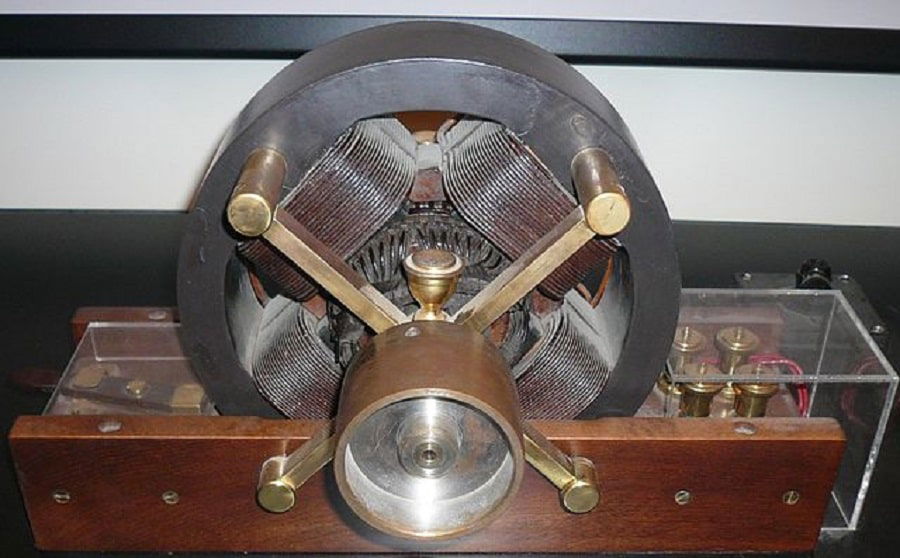
Nikola Tesla did not make his fortune until after he left the employ of Thomas Edison, and developed a new form of induction motor that ran on alternating current (AC). AC power was becoming popular across Europe and the USA because of its ability to transmit high-voltage power over long distances, and so a long-lasting motor that utilized alternating current was in demand.
Tesla’s induction motor, patented in May 1888, used a rotating magnetic field, and so avoided the need for a commutator. Without needing to replace brushes, and having less fire risk due to lack of sparks, the Tesla motor was an innovation in its field. Tesla’s business partners got it into the hands of trade media outlets, arranged demonstrations, and promoted the device directly to electric companies. Westinghouse Electric and Manufacturing took great interest and offered a lucrative licensing deal. Tesla would provide the designs and technology in return for a $2.50 royalty per horsepower produced by each motor, as well as $24 thousand to consult for a year. That would be approximately $1.4 million dollars in today’s currency. Tesla immediately re-invested this money into his experiments.
Niagara Falls Hydroelectric Power Plant

In the mid-1800s, plans were put into place to create a hydroelectric powerplant at Niagara falls. While work moved slowly, by the 1890s the Cataract Construction Company was ready to build the first power plant. First, though, they would need to determine which system was best to transmit the power from the falls. Over the years, proposals and open competitions were used to slowly work out the best contenders.
Then, in 1893, Edward Dean Adams, head of the company, approached Tesla to ask for his input. Against the advice of Thomas Edison (who insisted direct current was the best option), Tesla recommended a two-phased AC power system that could travel long distances and power relatively inexpensive light bulbs currently being manufactured by Westinghouse. The company heeded this advice and awarded the contract to Westinghouse, who gratefully rewarded Tesla with further contracts. Despite the obvious financial gain Tesla had from this advice, today’s electrical engineers agree that the correct decision was made at the time.
Radio Remote Control
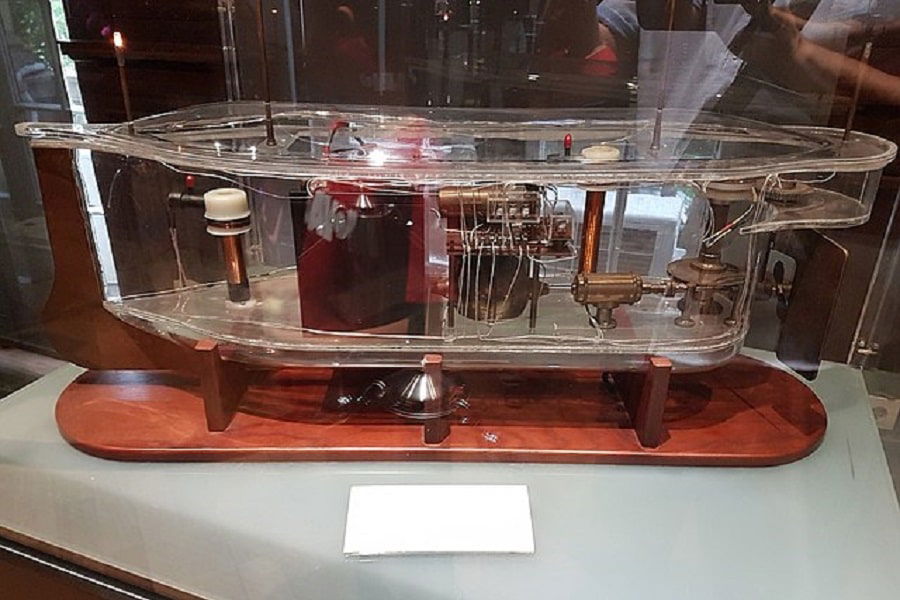
At an 1898 electrical exhibition at Madison Square Garden, Tesla demonstrated a “teleautomaton”, a boat he could steer from the land using radio controls. He later attempted to sell this idea to the military for possible use with torpedoes, but they were not interested. Tesla was quite ahead of his time with this work, as it was not until the end of the Great War that the military began their own experiments with radio control.
Tesla was not to be discouraged, however, and demonstrated “teleautomatics” for a number of years in the hope others would improve on his designs. Tesla’s “remote control” may not have been the first, as British engineers Ernest Wilson and C. J. Evans developed their own only the year before. However, the two technologies had little in common and this may be yet another example of parallel innovation in the sciences.
The Bladeless Turbine
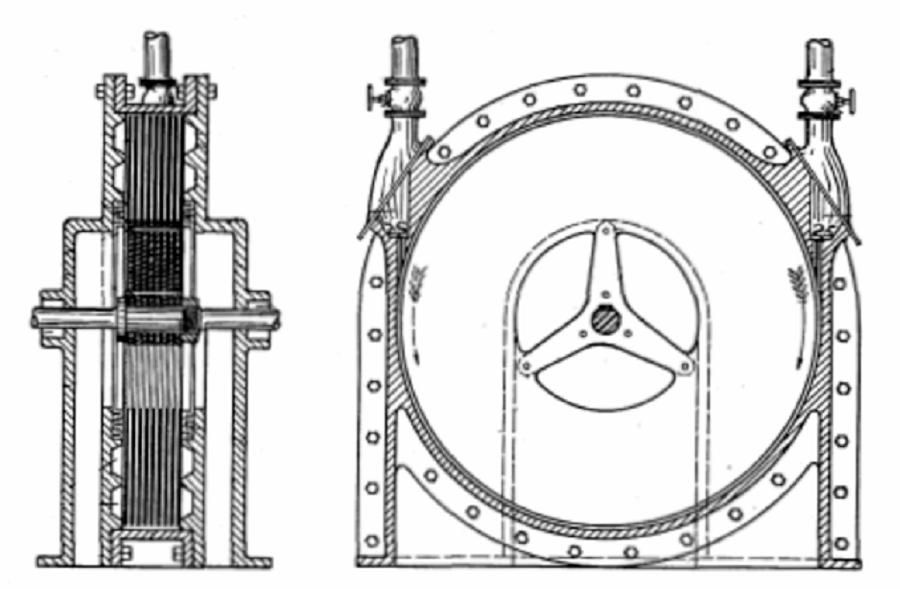
The “Tesla Turbine”, or boundary layer turbine as it was to be known, was first presented in 1906 on the inventor’s fiftieth birthday. Also used as a multiple-disk centrifugal pump, this device is still used today to move fluids that are abrasive, contain solids, or are otherwise difficult to handle. Because the pump does not use blades like a conventional turbine, there is less likelihood of blockages or damage to sensitive material that may be transported.
Unfortunately, Tesla’s designs were not fully realized until recently, as metallurgists were unable to create parts that would not move or warp during operation. Engineers today are examining the pump as a possible solution to moving blood products with less damage to cells in the process.
Nikola Tesla’s Inventions and Experiments That Haven’t Yet Taken Off
While many of Nikola Tesla’s inventions led to patented designs and devices used in the real world, many did not.
Wireless Power, Lighting, and New Forms of Radio
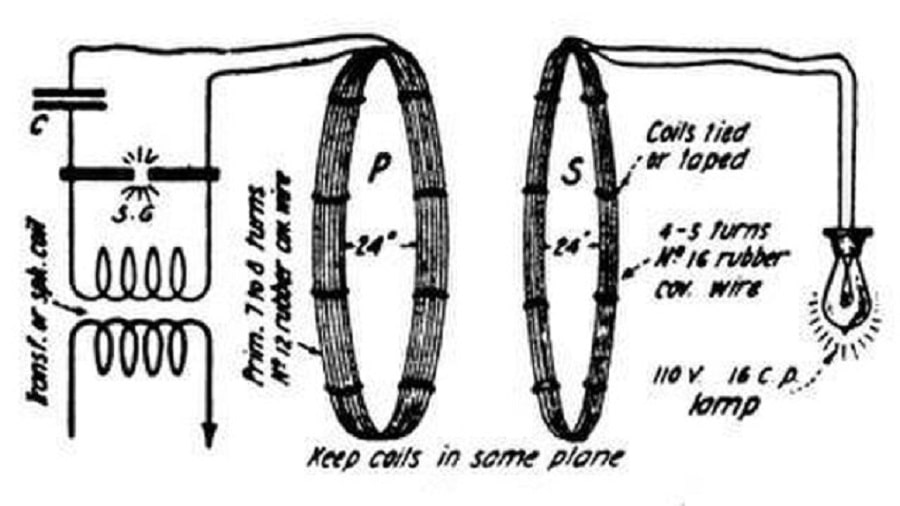
During the early 20th century, Tesla became obsessed with the idea of transmitting electrical energy without wires. His scientific understanding of the concepts behind the radio, light, and other radioactivity has since been found wanting, but it did not stop him from spending considerable resources on his experiments. He set up a station in the high altitude of Colorado Springs where he tested wireless telegraphy technology, and attempted to create early prototypes of radio telescopes. Tesla even believed that he had received radio signals from outer space.
READ MORE: Who Invented The Telegraph? Revolutionizing Global Communication
Today, “wireless charging” is slowly becoming a popular way to charge phones and watches, but the distance to do so is in millimeters, rather than kilometers as Tesla hoped for.
Experiments in X-Rays
Among Tesla’s other experiments was the fascination with x-ray technology. In fact, there is strong evidence that he inadvertently created the first x-ray image when he tried to photograph Mark Twain using a Geissler Tube only weeks before Wilhelm Rontgen’s announcement of discovering X-rays. After taking the photograph, he discovered that the only image captured was a metal screw on the camera lens.
READ MORE: The First Camera Ever Made: A History of Cameras
Therapy and Mental Stimulation with Ozone and Electricity
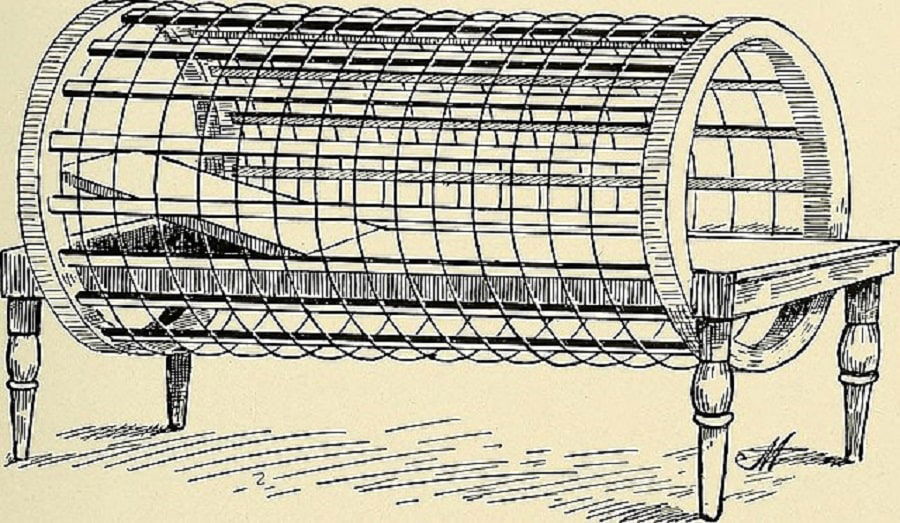
While now thoroughly debunked, Tesla also believed that ozone might contain healing properties and attempted to create healing gels by bubbling ozone through different oils. Later, he suspected the same technique might be used for sanitizing hospital equipment. Neither projects were a success.
Likewise, Tesla believed that keeping people in a “cage” of electrical wires might stimulate their brains and increase learning. Not only has this been proven false, but current science suggests that high-voltage wires may increase the chance of cancer.
What Fictional Devices Did Nikola Tesla “Invent”?
While Tesla himself would never call them fictional, the scientist made many claims about inventions despite showing no evidence of design or production. Among these were a death ray, an earthquake machine, and a motor that ran on “cosmic rays”. At one stage, Tesla claimed he had designed a “thought camera” (pictured above) that could present one’s thoughts as images projected on a screen.
Who Was Nikola Tesla? A short Biography
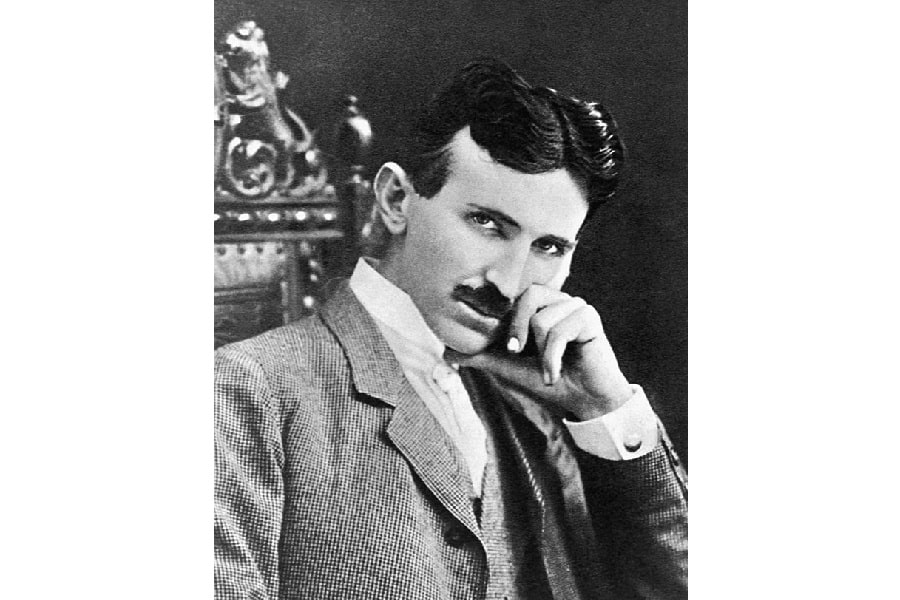
Nikola Tesla was born on 10 July 1856, in the town of Smiljan, which is in modern-day Croatia. His father was a local priest and former officer in Napolean’s army, and his mother was known throughout the town for her prowess at mechanical devices, and for having an eidetic memory. In his autobiography, Tesla would say, “[my father] had a prodigious memory and frequently recited at length from works in several languages [but my mother] was an inventor of the first order and would, I believe, [would] have achieved great things had she not been so remote from modern life and its multifold opportunities.”
Tesla wanted to be an engineer since childhood and developed a passion for electricity from his physics teacher in high school. He excelled academically both there and at university, but left the latter before graduating as a result of mental illness. He himself wrote, “I had a complete nervous breakdown and while the malady lasted I observed many phenomena strange and unbelievable.” Tesla continued to struggle with both physical and mental health problems through the rest of his life.
For a short time, Tesla worked as a draftsman, then as a teacher, and finally as an electrician at a telephone company. In 1882 he was able to gather enough funds to move to Paris and work for the Continental Edison Company. While he started with street lighting installation, it wasn’t long before he was designing and improving dynamos and motors. Two years later, Tesla’s manager, Charles Batchelor, was asked to return to America. He insisted the young man join him, and so Nikola left Europe to join the Edison Machine Works.
READ MORE: Who Invented the Lightbulb? Hint: Not Edison
Within six months, Tesla decided to quit the company, citing disputes over bonuses that would be worth over a million dollars in today’s money. After being scammed out of patents by investors, he spent a short time as a ditch digger while making designs at home, before finally being placed in contact with Alfred S. Brown and Charles Fletcher Peck. These two men would help him for years, selling his patents for improved alternate current generators and motors to Westinghouse.
From 1889 onwards, the success of his own company allowed Tesla to perform experiments in a range of new areas. He was particularly excited by wireless technology, x-rays, and electric brain therapies. Tesla was known for being more creative than careful with his thinking, with many of his ideas now considered science fiction, while many others only now being possible to create. Despite an 1895 fire in which Tesla’s New York lab burned to the ground, the company grew quickly.
Tesla sadly became more erratic, “eccentric”, and possibly even ill in later years. After a particularly extravagant 75th birthday party, Tesla would hold a public party every year in which he would opine on his latest ideas and inventions. In 1932, he claimed to have invented a motor that ran on “cosmic rays”, in 1934 a “teleforce” death ray that would “end all wars,” and in 1935, an earthquake-maker.
Nikola Tesla died on 7 January 1943, in his room at the Hotel New Yorker, of a heart attack. Two days later, the FBI seized all belongings, unsure about his prior claims about militarily-dangerous devices. When his belongings were inspected by John G. Trump, the professor at MIT’s High Voltage Research Laboratory, Trump found nothing dangerous or even new to add to the engineering world.
Trump eventually wrote in his report that the belongings only contained, “thoughts and efforts during at least the past 15 years were primarily of a speculative, philosophical, and somewhat promotional character often concerned with the production and wireless transmission of power; but did not include new, sound, workable principles or methods for realizing such results.”
Obsessed with work, and someone affected by his childhood, Tesla never married or had any known romantic relationships. However, he was rarely considered misanthropic. His secretary, Dorothy Skerrit, wrote: “his genial smile and nobility of bearing always denoted the gentlemanly characteristics that were so ingrained in his soul.” In later years he was to become friends with Mark Twain, Swami Vivekananda, and Sarah Bernhardt.
Tesla’s eccentricities did not stop at relationships. Nikola claimed to only ever sleep two hours at a time, and once worked 84 hours without rest. He was known to enjoy cards, billiards, and chess, however, and would “relax” as hard as he would work. He walked between 8 and 10 miles a day, and in later life took up a diet of only milk, bread, honey, and vegetable juices. He held anti-feminist and eugenic beliefs, although was not an advocate of either viewpoint.
READ MORE: Sleeping In: A Short History on Sleep before the Industrial Revolution
By his death, Tesla had made at least 278 patents issued in 26 countries. He is remembered today for his brilliant engineering skills, public feuding with Thomas Edison, and wild imagination of later life. His name has been given to holidays, scientific measurements, powerplants, schools, and airports. His likeness has been on ten different currencies since his death, including the Croatian 10, 20, and 50 cent euros. While the man himself is in no way connected to the car manufacturer, Tesla Inc. is the 6th largest company in the world.
What Was the IQ of Nikola Tesla?

Nicola Tesla’s IQ has been estimated between 160 and 310. The average American adult has an IQ of 110, and only 0.2% of people have an IQ over 150. However, estimating IQs is difficult and so it is impossible to work out exactly how smart Nikola Tesla was. Most psychologists estimate that Tesla was more academically gifted than Einstein, Edison, or Newton.
What Field of Science Was Nikola Tesla Known For?
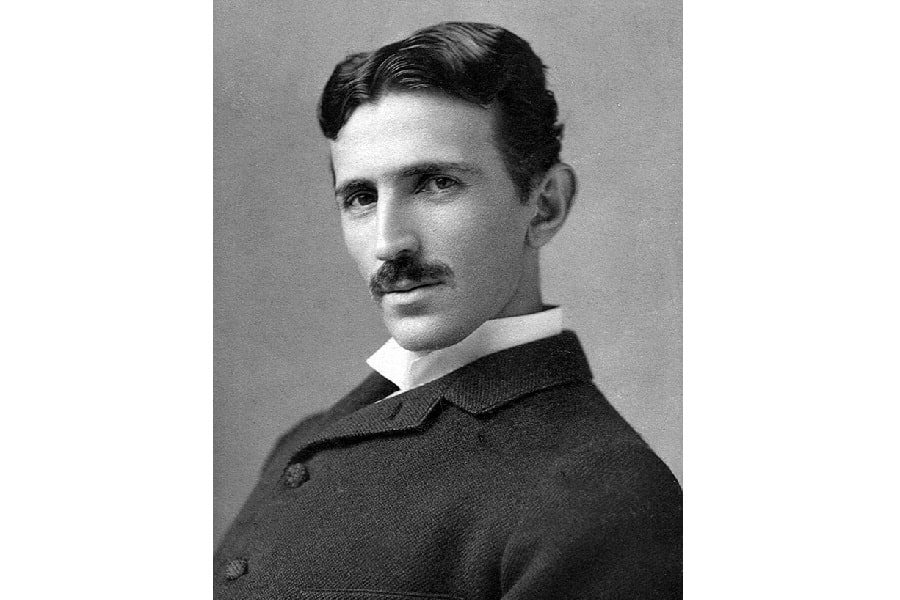
Nikola Tesla may have experimented in optics, astronomy, and even civil engineering, but he was best known for his work in the physics and engineering of electrical energy. While Tesla’s mathematical capabilities were strong, his real genius lay in a creative mind and a natural aptitude for engineering concepts. While many of his theories about energy were debunked even at the time, no one could argue against the improvements he made to electrical generation, the efficiency of motors, and the use of radio.
READ MORE: Who Invented Math? The History of Mathematics
What Was Nikola Tesla’s First Invention?
There is no evidence that Tesla applied for a single patent until he moved to America. On March 30, 1884, Tesla filed for his first patent, an electric arc lamp. This could be called his first official invention since leaving Edison’s company and selling this design allowed him to found Tesla Electric Light and Manufacturing.
What Was Nikola Tesla’s Greatest Invention?
While Tesla was most famous at the time for his work with Alternating Current electricity production, perhaps his greatest work was in the use of remote control, and the exploration of wireless power. Despite never successfully creating a wireless power system, the work he performed at Wardenclyffe would be used for decades. In the last years, we have finally seen some of that work come to fruition, with our portable devices now powered simply by laying on charging pads.